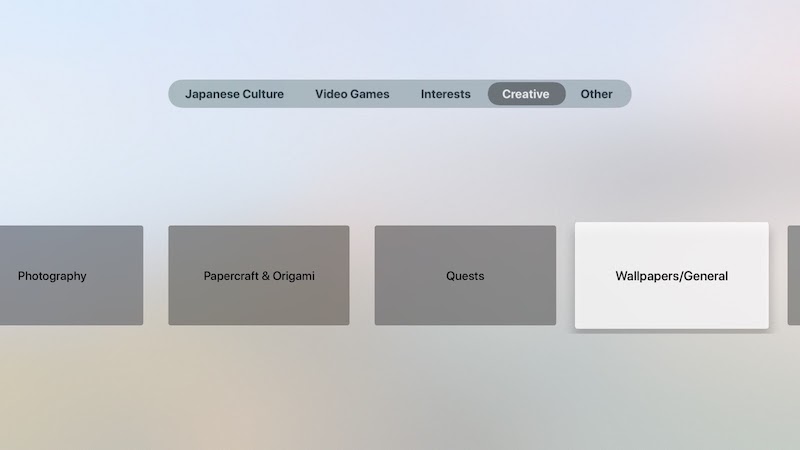26 Sep 2021
iOS 15.0 introduced an AsyncImage SwiftUI view to enable asynchronously loading URL-based images.
AsyncImage works well for many scenarios, but has several limitations:
-
AsyncImage doesn’t provide a mechanism for “inflating” an image before drawing it. This means
that large images can take a long time to render the first time that they are drawn. This can
cause “hitches” or “jank” when scrolling.
-
AsyncImage doesn’t provide a mechanism for pre-scaling large UIImages down to screen size.
This can cause slow rendering and excessive memory use when displaying large images.
Here’s a replacement view, SmoothAsyncImage, that fixes these two problems.
More …
13 Jun 2021
Introduction
Concurrency features are now available in Swift 5.5, released as part of Apple Xcode 13 beta 1.
Let’s update our Web Scraping code to use the Swift 5.5 concurrency APIs.
More …
31 Dec 2020
Introduction
In this tutorial we’ll modify our
toy web scraper to use
the newly proposed Swift async/await and Structured Concurrency APIs.
func scrapeHouseplants(url: URL) async throws -> HouseplantCategoryDictionary {
return try reduceHouseplantInfos(
infos: await scrapeListOfHouseplants(url: url, html: fetch(url: url))
.asyncMap { ticket in
(ticket.key, try scrapeHouseplantInfo(url: ticket.url,
html:await fetch(url: ticket.url)))
}
)
}
30 Dec 2020
Introduction
In this tutorial we’ll use a variety of techniques to speed up our
toy web scraper.
| Program Version |
Time (s) |
| Original |
17.7 |
| Release mode |
4.7 |
| DispatchQueue.concurrentPerform |
1.1 |
| URLSession |
0.6 |
More …
29 Dec 2020
Introduction
In this tutorial we’ll use the open-source
Swift Soup library to scrape
open-source houseplant data
from the Wikipedia houseplants page.
Our program will scrape this URL:
https://en.wikipedia.org/wiki/Houseplant
Our program will produce a JSON object containing the scraped data.
It will look something like this:
{
"Tropical and subtropical": {
"Aglaonema" : {
"description": "These are evergreen perennial herbs with stems…'
}
…
}
…
}
28 Dec 2020
My college freshman son and I competed in this year’s
Advent of Code coding competition. It was a
battle of youthful energy against wisdom & experience. I am somewhat chastened to
report that we scored about the same.😅
My son used Python, and didn’t even use any of the fancier Python libraries or
language techniques. He also eschewed the debugger, doing all his debugging using
print() statements.
I used Swift & Xcode, and tended to use every feature of the language and libraries.
That we scored similarly probably shows that the two languages are evenly matched for the
kinds of problems that were given in this contest.
The Advent of Code puzzles typically come in two parts: The first part is usually easier,
the second part usually adds a twist that requires extending the original solution.
In looking back on the month, I think that, compared to my son, I typically
over-engineered my solutions. I introduced enums and structs and helper functions
where he used the built-in data types and copy-and-paste. This usually gave
him a signficant edge on the time to solve the first, “easier” problem.
My over-engineering sometimes paid off. I usually had easier debugging (due to
more typechecking), and sometimes it was easier to refactor my code for the “twist”
in problem two. Plus occasionally having a compiled language helped. Althoght not
that often. The AoC problems are designed to be solvable in short run times in Python,
even on old hardware.
My edge, the reason that I was competitive, was that I have enough experience that I
could usually figure out how to solve a given problem. In later days of the contest,
when the problems got harder, I felt that this was an unfair advantage, so I would
give my son a hint about what web searches to use to figure out a good way of
approaching the problem.
Overall we had fun. Shout out to the excellent
r/adventofcode subreddit. Each day, after
we solved the puzzles ourselves, we would check in with the subreddit to see other
solutions.
Improving my Swift skills
Using Swift to compete in AOC has encouraged me to
explore parts of Swift that I hadn’t had a need to or chance to learn before.
- String processing, and the relationship between String, Substring, and Character.
- Regular expressions
map, reduce, filter, forEach, compactMap and occasionaly flatMap.- Classic Algorithms
- SIMD for points.
typealias for briefer code.- Generics for reusable algorithms.
- NSCountedSet
ArraySlice and the various Ranges.- Creating Sets and Dictionaries the functional way rather than imperatively.
- Identifiable, RawRepresentable, Hashable, CaseIterable, CustomStringConvertible.
- Sorting
- Using value types as much as possible.
Room for Improvement
Swift is a good language for coding contests. Certainly much less verbose than many
other Java-like languages. However, there are still some speed-bumps compared to
Python or F#.
- String processing is verbose.
- Regular expressions are very verbose.
- No automated synthesis of Comparable.
- Tuples can’t conform to Hashable, limiting their use as a general value type.
- The Swift standard library is missing many useful algorithms and collection classes.
- These can be added via third party libraries, but that takes time during a
contest.
- The tradeoff between debug builds and release builds.
- Debug builds are slow.
- Release builds are difficult to debug.
Previous AoC contests
The old Advent of Code contests are all still
“live”. You can’t get a timed score, but you can still enter and complete any contest.
I first did Advent of Code last year, but this year in addition to entering the 2020
contest I also completed all the earlier years’ contests. r/adventofcode was a handy
resource for this task. There are archived posts for discussing the solutions to
each day’s puzzles for every year’s contest.
27 Dec 2020
After a day’s hacking, I am pleased that I can update my github.io-based
blog using an iPad. Here’s how I did it:
-
I researched the topic, finding some good info on Avery Vine’s post.
-
I wrote a script,
ConvertBlogFromPublishToJekyll.swift,
to convert my posts from the markdown flavor used by
Publish to the markdown flavor used by
Jekyll.
That’s it, there’s no step three. Whenever
I want to post to my blog from my iPad, I just edit the sources in
Working Copy. Because the blog is backed by a git project,
I can also edit the blog from any other device that supports a git client, including
a regular Mac or PC.
This works because Jekyll support is built into github.io web pages. Whenever a new
commit is made, Github’s servers automatically run the Jekyll app to regenerate my blog.
Pro tip: The Working Copy text editor can be switched from “Programming” mode to
“Natural” mode. Natural mode provides spell checking.
05 Jul 2020
Over the past few months I have been coaching one of my daughters as she writes a data collection application for her model rocketry team.
Her team is competing in a yearly model rocketry contest called The American Rocketry Challenge (TARC). Teams of high school students compete to design model rockets that best meet contest rules. Like a road rally race, the goal is not to build the fastest or highest flying rocket, but rather to build a rocket that can most precisely fly to a given height, with a given flight duration.
In the course of a year, a team typically makes around 30 test flights, carefully modifying their rocket to more closely meet the contest criteria.
My daughter wanted to create an application to enable her team to record the flight data (altitude, flight time, weather, whether the payload egg cracked, etc.) for all their flights. Once collected, she wanted to be able to analyze the data. (Graphing it, computing averages and deviations, and so forth.)
She initially wanted to write a mobile phone app to do this, so I helped her investigate the how to do this. We settled on Google Firebase. I helped her write a prototype iOS app using SwiftUI. It worked well, and looked great, but it turned out to have a few drawbacks:
-
Firebase servers are complicated to set up, and can’t easily be cloned. This steered us towards a design where we had one application for multiple contest teams. Once we started down that design path, we ended up with a hierarchical design with “organizations”, that had “teams”, that had “members”. There was an account system with user roles such as “organization administer”, “team administrator”, “team member”, and so on. Complicated server-side rules and scripts enforced different permissions.
-
Apple’s “Sign in With Apple” product is attractive for users, but is difficult for app developers. Users typically don’t know their Apple account email, which makes it difficult to help them administer their accounts. Working around this required us to implement a complicated invitation system.
-
The app itself was about 1500 lines of Swift code, and we were not enthusiastic about porting it to Android.
We were not sure that we were going to be able to get both the iOS and Android versions of the app finished in time for the fall launch season. Plus we weren’t sure we wanted to deploy an app that required centralized administration.
So in late June we had a re-think. We came up with a simpler solution: Write the app as a Google Sheets spreadsheet. This is a clunkier UI, but it has a number of important benefits:
- Works on Android, iPhone, and PC.
- Each team has its own independent spreadsheet.
- No central administration.
- Uses the normal Google Docs account system.
- Avoids the potential of hitting the “free tier” Firebase account limits.
- Each team can customize the sheet to taste, using easy-to-understand spreadsheet formula and scripts.
- Powerful charting and data analysis tools are built in.
- Allows quick-and-dirty end-user changes to UI.
- Concentrates on solving the “Data” part of the problem, rather than the “Design” part.
Since she switched technologies, development has gone much more quickly. Partly because the spreadsheet provides so much built-in structure, and partly because it de-scoped all the multi-team and account role related work.
The main drawback of the new tech stack is that the Google Sheets mobile app UI is limited. The new app definitely looks like a spreadsheet app rather than a mobile app. For example, instead of pressing a button to invoke a script, users have to pick a menu item from a cell’s pop-up data validation menu.
But it’s such a relief to be essentially “done” with development of the first version of the app. Now she’s working on creating a web site, writing documentation, recording tutorial videos, running user tests, and all the other work that’s needed to polish and launch the app.
I guess her greatest challenge is waiting to see if next year’s TARC contest happens at all, given the COVID-19 pandemic.
The app’s web site is Yes it’s Rocket Science
14 Jun 2020
I’ve been using John Sundell’s Publish static site generator to create this web site.
It’s a good tool, but woefully under-exampled.
The best resources I’ve found (besides reading the source) are:
Note from 2020-12-27: I have since switched to using Jekyll.
07 Mar 2020
As a hobby project, I’ve been writing an imageboard browser app to learn the SwiftUI and Combine libraries.
SwiftUI and Combine are available on many Apple platforms. So far I’ve gotten my imageboard browser working well on iPhone and iPad, and this weekend I got it working on Apple TV.
The iPhone and iPad run the same “Universal” app, which provides a vertical scrolling list and navigation stack UI
that works well for both iPhone:

and iPad:

The AppleTV app looks and acts quite differently:

More …


